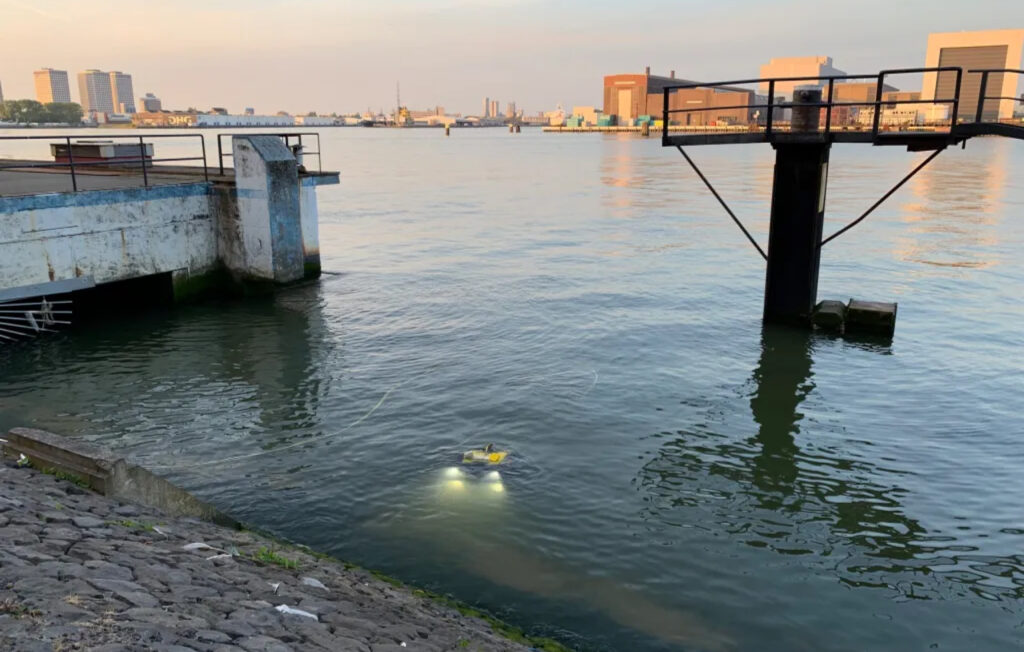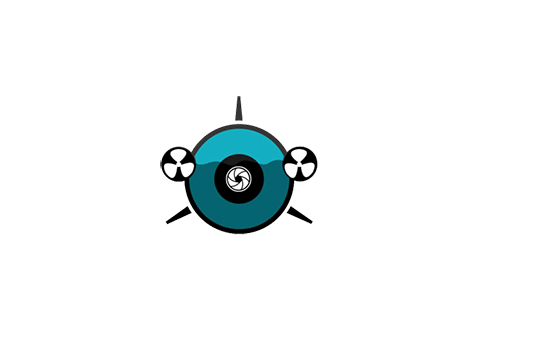
Underwater Robots are one of the few inventions in the world that provide humans a unique passage to the world beneath the surface. The underwater realm is one that mankind cannot explore easily.
Revisiting ROV History!
The first-ever ROV in human history was built in the year 1953 by Dmitri Rebikoff. He was a French dive photography and equipment expert. He created his ROV Poodle taking inspiration from his dive scooter. He customized the system & transformed it into an unmanned vehicle with a tether and surface controls.
It took 7 years for this technology to get noticed by the U.S. Navy. In the 1960s they began using it and continued experimentation to further improve the technology. Several decades later today, ROVs have become a standard inspection solution in several industries.
What does an ROV Comprise of?
While it is true that ROVs come in all shapes and sizes & can address varied requirements. There are some basic components that remain uniform. Most ROV systems can be divided into the following sections:
- Mechanical
- Electrical
- Primary Subsystems
- Surface Control
Let us go through what each of these sections consists of:
Mechanical:
Frame:
The frame forms the skeleton of the ROV. It is the tough structure that enables the attachment of the necessary mechanical, electrical & special tools. Some examples of the components include cameras, SONAR sensors, manipulators, lights, etc. Majority of the ROVs are built rectangular as this is the easiest to work with and customize. These frames can be built from several materials ranging from plastic composites to aluminium. The idea is to choose a substance that offers optimal strength at a lesser weight. In addition to this, the frame of an ROV also needs to be in compliance with standard protocols of load and lift path strength.
Propulsion Systems:
The propulsion systems come in three different variants: Electrical, hydraulic, and ducted jet propulsion. These can be utilized in accordance with the size of the ROV and the type of work it is going to undertake. It is of paramount importance to have a sound propulsion system in place to increase the operational efficiency of an ROV.
Thrusters:
The thrusters are a part of the propulsion system; most ROVs have a minimum of two thrusters. Thrusters can be hydraulically or electrically powered. These are the components that help the ROV to move in multiple directions underwater.
Electrical:
Tether:
The majority of the ROVs these days have a tether that is used to carry electrical power/signals to the surface of the water. It enables the ROV pilot to control the path of the vehicle and receive a live feed from the camera mounted on the ROV. The tether is made of a number of things like conductors, fiber optic for video/data transmission, filler to achieve neutral buoyancy, and protective outer covering.
Underwater Conductor:
Saltwater is extremely conductive; it causes any uncovered electrical submerged item to short circuit. This is where an Underwater Conductors’ role comes in, it conducts the required electrical currents whilst blocking the water path and sealing the connection to reduce the electrical leakage hazard.
Primary Subsystems:
Camera:
This is the most common component of the ROV. The job of the system is to dive deep into the waters, and it is imperative that an ROV has a quality camera attached to it. These cameras are loaded on small circuit boards and transmit a video signal in the required format up the tether to the video capture system on the surface.
Lights:
Below a few feet from the surface, sunlight rapidly disappears and most ROV missions occur at depths that are devoid of light and completely dark. Human eyes see things in color as objects reflect the wavelength of light representing the colors of the visible spectrum. Underwater artificial lighting illuminates objects and allows their visibility in true color with intensity. The main types of lamps used underwater are fluorescent, light-emitting diode (LED), incandescent and high-intensity gas discharge.
Sensors:
Sensors are the objects that allow the ROV to transmit data from underneath the surface to above the surface. A combination of instrument and sensor is loaded on an ROV as a payload. The most commonly used sensors are namely SONAR sensors, CTD sensors, Imaging sonar, Multi-level environmental sensors, etc.
Surface Control:
The pilot control is the above-the-surface physical interface which helps the ROV pilot to navigate the ROV and provides the live feed of the vehicle’s camera view. The above listed are the basic core components that every ROV possesses, apart from these, there are many other additional parts like sampling devices, robotic arms, actuators, tools, etc. If you are intrigued to know more about the workings of an ROV visit www.planystech.com or dial +91-8448188507.


